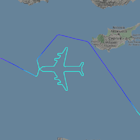Although the political situation in Cyprus is complex, it's easy to visit both sides of the island.
Most travelers do not need to obtain a visa in advance to visit either the Greek-speaking Republic of Cyprus in the south or Turkish-administered North Cyprus, or to travel between the two.
Here's everything you need to know about visas for Cyprus.
Visa rules for Cyprus
The Greek-speaking Republic of Cyprus claims sovereignty over all of the island, but Cyprus was partitioned into Greek and Turkish territories in 1974. Today, the Republic covers the south and west of Cyprus, about 60% of the island, while the remainder is governed separately as the Turkish Republic of Northern Cyprus – often referred to as North Cyprus, and recognized only by the government of Turkey.
Visas for the Republic of Cyprus
The Republic is a member of the European Union, but it is not part of the Schengen Areas, which means that all EU citizens will need to go through immigration checks on arrival. The good news is that EU citizens, along with visitors from the UK, the US, Australia, Canada, New Zealand, Singapore and many other countries can enter the Republic of Cyprus for up to 90 days without a visa.
Residents from countries where visas are required for entry to the Republic, such as Russia, South Africa and Turkey, must apply for a visa through the Republic of Cyprus embassy or consulate. See the Ministry of Foreign Affairs website for a full list. In practice, this is usually a straightforward process.
A 90-day single-entry visa good for tourism costs €20 ($23), while a 90-day visa good for multiple entries costs €60 ($69) – useful for people intending to cross back and forth between the south and North Cyprus. Applicants do not need to apply in their home country; many travelers use the Cyprus embassy in Athens before catching a flight to the Republic. Check with your local Cyprus embassy or consulate to see how long it will take to process the visa application.
For entry with or without a visa, your passport should be valid for at least three months after your intended departure date from Cyprus, with two blank pages for entry and exit stamps. Citizens of the EU and/or Schengen countries can use a national identity card in place of a passport to enter Cyprus.
Check the Republic of Cyprus’s regularly changing entry requirements regarding Covid-19 at the government’s Covid-19 portal, which outlines if special documents and/or tests are required plus any quarantine requirements.

Visa requirements for North Cyprus
It is easy for citizens of almost every nation to visit the Turkish Republic of Northern Cyprus, which administers the northern part of the island. With a few exceptions, travelers generally do not need to apply for a visa in advance to visit.
Visas good for 30 to 90 days are typically granted to visitors at land border crossings from the south, and at the airport and two ferry ports in North Cyprus. Passports must be valid for two months after the date of entry to the North; citizens of the EU and/or Schengen countries may use a national identity card in place of a passport.
Check the Turkish Republic of Northern Cyprus’s regularly changing entry requirements regarding Covid-19 at the government’s Covid-19 travel rules website, which outlines current requirements for documents, tests and quarantine.

Crossing between the Republic of Cyprus and Northern Cyprus
The Republic of Cyprus in the south and the Turkish Republic of Northern Cyprus in the north have been separated since the 1970s by the Green Line, a demilitarized zone administered by the UN. This was once an impregnable barrier, but today, crossing is easy with some minor formalities at the border.
Rules for travel between North Cyprus and the south are the same as for entry into either area from outside the island. If a visa is not required to enter from abroad, one will not be required to enter overland from the other half of the island. In general, it’s easy for travelers to get around both sides of the island after crossing the border.
Officially, travelers who have entered North Cyprus from abroad via the airport in Ercan or the ferry ports at Kyrenia (Girne) and Famagusta (Gazimağusa) are not permitted to enter the Republic. In practice, travelers who are allowed to enter the south without a visa can usually cross without problems, but this may be harder if you come from a non-EU state.
There are seven approved overland crossings, with sporadic negotiations to increase this number. You can cross by vehicle, bicycle or on foot, depending on which crossing you use, and you can also take a taxi across the border to destinations on the far side. The most convenient crossings join the two halves of the divided capital, known as Nicosia (Lefkosia) in the south and North Nicosia (Lefkoşa) in North Cyprus.
You may also like:
The best places to visit in Cyprus: from Aphrodite's rock to Adonis' bath
See a different side to Cyprus on these stunning hikes
The 8 most beautiful beaches in Cyprus for wildlife, swimming and partying












